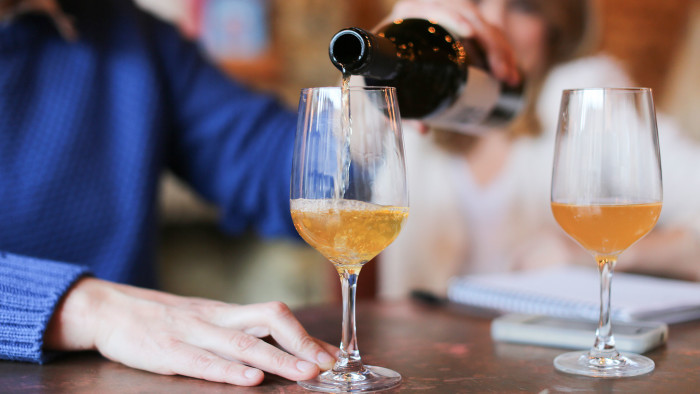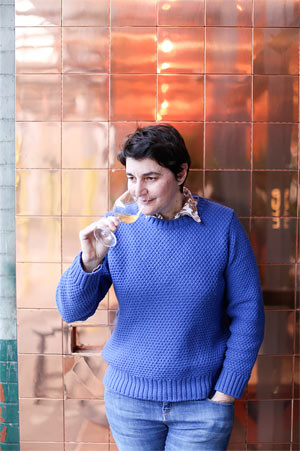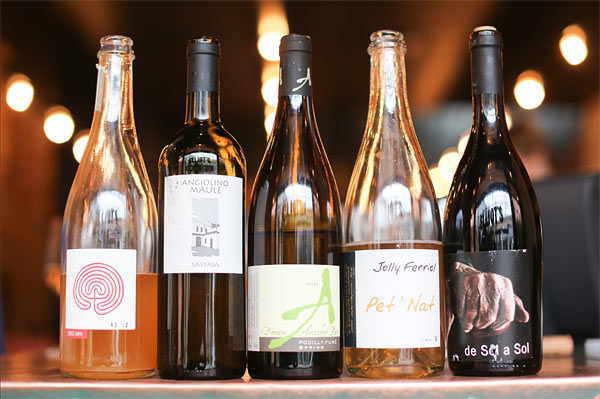Artisan food: Wine au naturel

Simply sign up to the Life & Arts myFT Digest -- delivered directly to your inbox.
It started insidiously, in subtle, cheek-itching ways that made me think I had developed a mild allergy to my washing detergent. But soon I was sneezing every day for no apparent reason, sometimes until 4am. By a reluctant process of elimination I realised that the problem was wine. Or, more probably, it was the sulphur dioxide compounds that act as preservatives in the wine.
Complaining to one’s doctor that Burgundy makes you sneeze was never going to garner much sympathy. Still, mine dosed me with antihistamines and explained that some people possibly lack the enzymes necessary to break down the sulphites added not just to wine but also to many foods (from dried fruit to sausages and guacamole). All wine contains naturally occurring sulphites, and it’s not simply a case of going organic to get around the problem. I did, and still sneezed. In fact, one madly expensive organic Zinfandel had my throat burning and tightening. Death by rosé. How middle-class can you get?
Organic wine might use grapes free from synthetic pesticides and fertilisers but, paradoxically, is permitted to be processed with several of the additives common to conventional wine. Even some biodynamic wines add commercial yeasts. Only natural wines are farmed organically and hand-harvested and then bottled using low or no intervention. No reverse osmosis machinery, no spinning cones and cryo-extraction, no weirdly flavoured yeasts, no snowdrifts of sugar. And only the very lowest levels of sulphites.
One woman better versed in this subject than most is Isabelle Legeron, France’s first female Master of Wine and an advocate for natural wine. “You have to pretend you’ve never had wine before,” she tells me as she lines up several bottles of what looks like cider for a one-to-one tasting. “Pretend it’s just been invented today.”
Natural wine must be approached with an open mind. Some of the bottles in front me have beer tops and one contains sediment that when shaken looks like a lava lamp. Yet this sparkling Costadilà from the hills north of Venice tastes citrus-peelishly crystalline and becomes more aromatic with each sip, as though evolving in the bottle. Drier than the driest Brut, its bubbles are more condensed, headier and yet more credible than champagne, which can taste fake, as though it has been put through a soda stream. I sip and wait. No sneezing.

Born in Cognac into a family of distillers, Legeron is curator of the RAW wine fair, now in its third year and exhibiting 700 natural wines from 150 growers across the world. She insists, “This stuff should be called wine and the rest should be called something else.” Since nothing is filtered away from a natural wine, colours can range from Bellini-cute to hues implying oily sweetness. This is particularly true of an Esencia Rural from Spain, whose label features a photograph of the wind-battered hands of its maker, Julian Ruiz Villanueva. It is the colour of cinnamon or Winterfell mead, something surely created to be sloshed into a Christmas trifle and topped with quantities of cream. Wrong again. Made by leaving the skin of the grapes in contact with the juice for 100 days and then bottled with just a bit of residual sugar, it is slightly sweet but cleansing, unsickly, minutely off-dry, perfect to drink with good dark chocolate.
“Wine experts focus so much on colour scoring,” shrugs Legeron, as I marvel at the disconnect between colours and tastes. “A fake pale wine with all its additives and sulphites is like wine on crutches. Whereas these wines – all still fine wines – are like kids brought up eating dirt and unpasteurised cheese. They’re more resistant and daring and healthy. With natural wine you get more flesh on the skeleton.”
After the Costadilà and the Esencia I felt enlivened and excited (absolutely no sneezing!) but also quick-thinking and calm, and couldn’t help but take some over to my additive-conscious sister’s house for a second opinion. With me too was a Pouilly-Fumé from vines in the Loire reputedly thick with honeybees and grasses, ploughed by horses and sprayed with herbal tea preparations. My sister found it to be “gorgeously animalish” but to me it tasted of that thing I had been missing for six wine-free months: gentle yet sharpening. Which is precisely what you want from a glass of cold white wine or fizz in early summer.
“A grape has everything itself to produce wine,” explains Legeron. “Why do you want to add anything to it? It’s just a form of control. You need to trust that the work you did in the vineyard is going to show in the cellar. You need to trust that nature does the best job possible.”
And there was me, thinking I was going to have to learn to like vodka.
——————————————-

Legeron’s picks at this year’s RAW Fair
● Costadilà, 280 slm, Veneto, Italy, 2012 (sparkling, orange)
● Domaine Jolly-Ferriol, Pet’Nat, Muscat, Roussillon, France, 2013 (sparkling)
● La Biancara, Sassaia, Gambellara, Italy, 2009
● Alexandre Bain, Spring, Pouilly-Fumé, Loire, France, 2011
● Esencia Rural, Sol a Sol, Castilla, Spain, 2009
Sulphite-free natural wines are also available to buy online at robersonwine.com, raeburnfinewines.com and vintageroots.co.uk.
——————————————-
RAW, The Artisan Wine Fair, May 18-19, The Old Truman Brewery, 91 Brick Lane, London E1 6QL; rawfair.com
To comment on this article please post below, or email magazineletters@ft.com
Comments